More from our spring 2013 Turkish Tulip Trip: Viransehir
Probably the most challenging part of our trip this past spring was not climbing the peak of Nemrut Dagi, or walking around Diyarbakir as a group of very obviously foreign women, or negotiating the often horrendous traffic in Istanbul.
It was spending the night with family. The market town of Viransehir is not exactly a village. The name translates to “ruined city” – it’s been home to and pillaged by numerous civilizations – but it’s certainly village style living in an urbanized setting.
Our plan had been to visit one of Abit’s 6 sisters and her extended family of about 20 people for lunch, but the gods of travel nixed that idea when we got a late start out of Urfa. Our intrepid driver for the day cousin Seyhmus was part of this family and would have been crushed if we’d said no, that we had to push on to Derik that night.
So we arrived late afternoon, to welcoming tea in the family’s current 4 room home on the outskirts of town. Then a tour of the much larger house they were building on the property, which will give the 4 brothers, their father, their wives and children a better environment for living. It was good to see them doing well, though it was obvious they all worked to exhaustion each day, and we were adding to their work. But voicing any objection to spending the night while keeping the peace would have been impossible. Believe me, I’ve tried.
This is a country that counts hospitality as a primary function of every citizen. Guests are a gift from God, especially when brought by an eldest brother who is not often in his southeastern home region. The challenge is the not-so-simple matter of culture shock, hot dusty weather, a higher body count per square meter than most visitors are accustomed to, and – not the smallest consideration – a thriving community of mosquitoes, thanks to the surrounding green garden.
Family life like this completely overwhelmed me when I first moved to Turkey. it can still overload my senses now, throwing me back to my early days of acclimation. To be honest, I’ve never truly assimilated. I like my personal space, enjoy being alone, and the family learned it had nothing to do with them. We can laugh about it now.
Sitting on the floor, lined with sturdy brightly colored cushions, strewn with rugs and a plastic mat laden with food and tea glasses, or bedding, depending on the time of day. Always people coming in and out, a huge pile of shoes at the front door, a TV on somewhere, a few females chopping veggies and cooking in the kitchen. Conversations involving the entire group, just a few side by side, on a cell phone being passed around – simultaneously. Women knitting, men rolling cigarettes, children being children. The warm loving chaos of our quite typical Kurdish family is a cultural touchstone I like to share with our visitors, but in small doses.
Further to our already disrupted plans was the news that the best knitter in Abit’s father’s village of Ambarli, where we were due the next day, had left for Western Turkey to be with her daughter, expecting the birth of a child any minute. But those gods of travel intervened once more: my favorite knitter and former Selcuk shop inspiration for knitted goods, Azize Hala (which means Auntie on your mother’s side) happened to be visiting Viransehir too.
That night, Azize’s slippers became the random mascot of our trip. She is the master among Abit’s mom and her sisters, prolific in the number of styles and patterns she can turn out. She and the other women in our family used to sit with me in our textile shop. More often than not, tourists would walk in to see what we were doing. Our knitting ladies made us the envy of all shops in Selcuk, enticing customers with just-off-the-needle socks instead of repelling them with tired come-on carpet selling lines.
Turkish style knitting involves show and tell. No patterns are written, or when they are, assume the knitter will figure most details like sizing out for herself, so are generally rather vague. What most amazes me is the engineering of slippers like these. Done on double pointed needles in whatever quantity best works for each section, they start on top of the foot, shape snuggly around the toes, continue sides and sole at the same time, then neatly fit it all together around the heel and up the back. Seamlessly, few ends to work in. Patterns and color combinations are limited only by yarn supply and imagination.
Our group watched, worked and adapted Azize’s best design, those lovely purple and cream ones, into our own versions as we traveled. I became obsessed with knitting them in every color of Ikonium Studio’s hand spun natural dyed wools. Coming from countries whose knitters expect detailed charts and instructions noting every last stitch, we found learning to think the details through – in those following days when we’d forgotten what Azize had shown us – a good lesson in working solutions out for ourselves.
When I did finally write the western style pattern for Azize Hala’s slippers, it was a 5-page pdf. A pattern engineered over years of many hands perfecting, a slow world method of creating lasting work. Back to the skills that first connected me with the women of my husband’s family. Translating between cultures through stitches and personal expressions of color, with the inevitable tensions here and there, but ultimately universally understood. Everyone wears slippers.
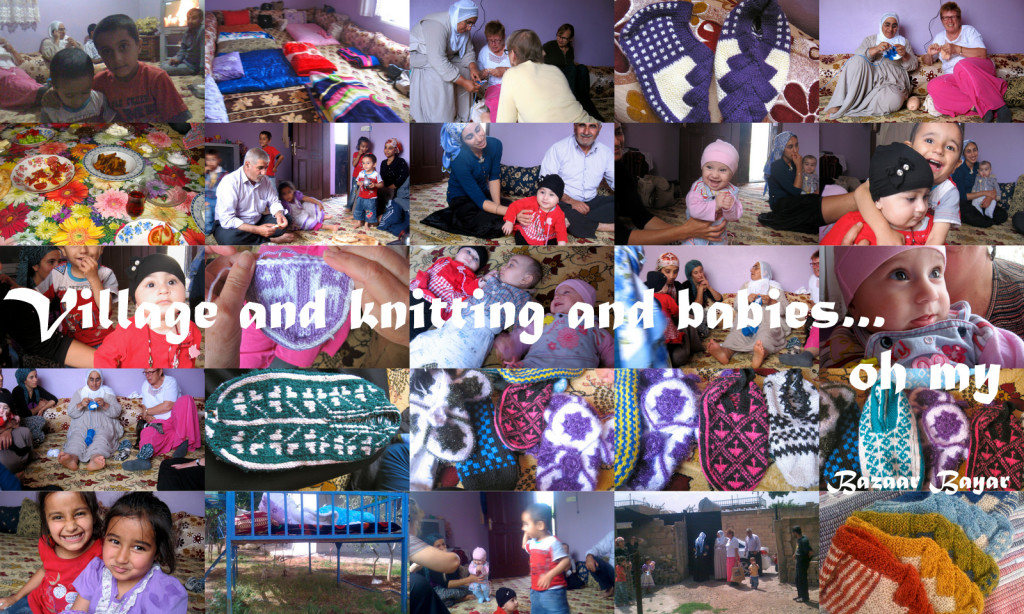
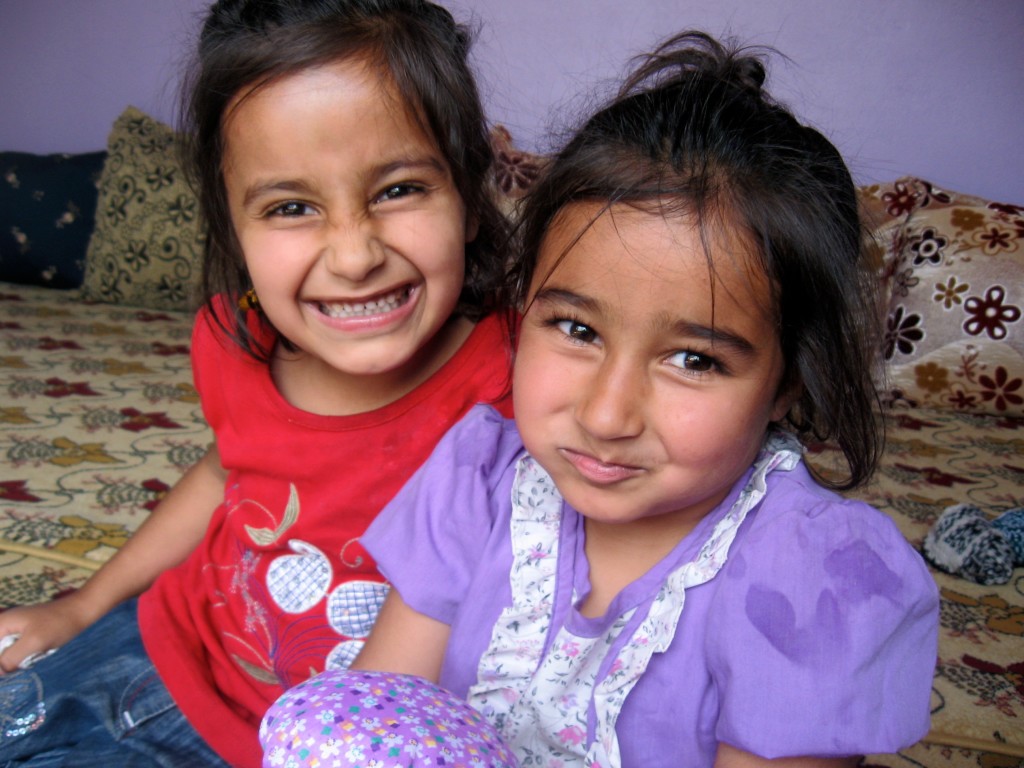
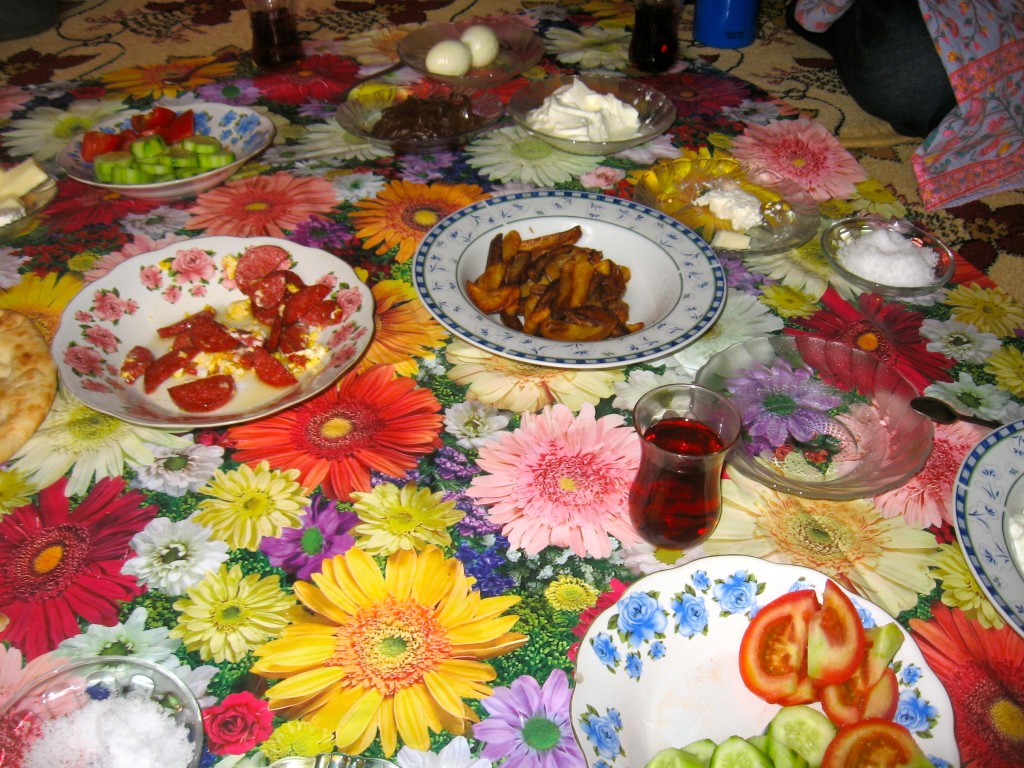
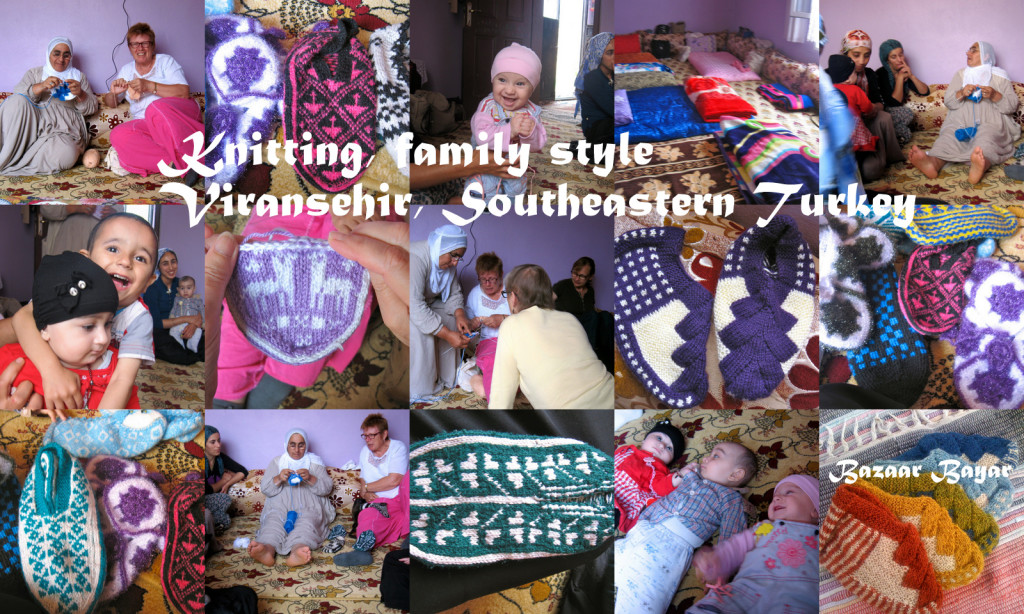
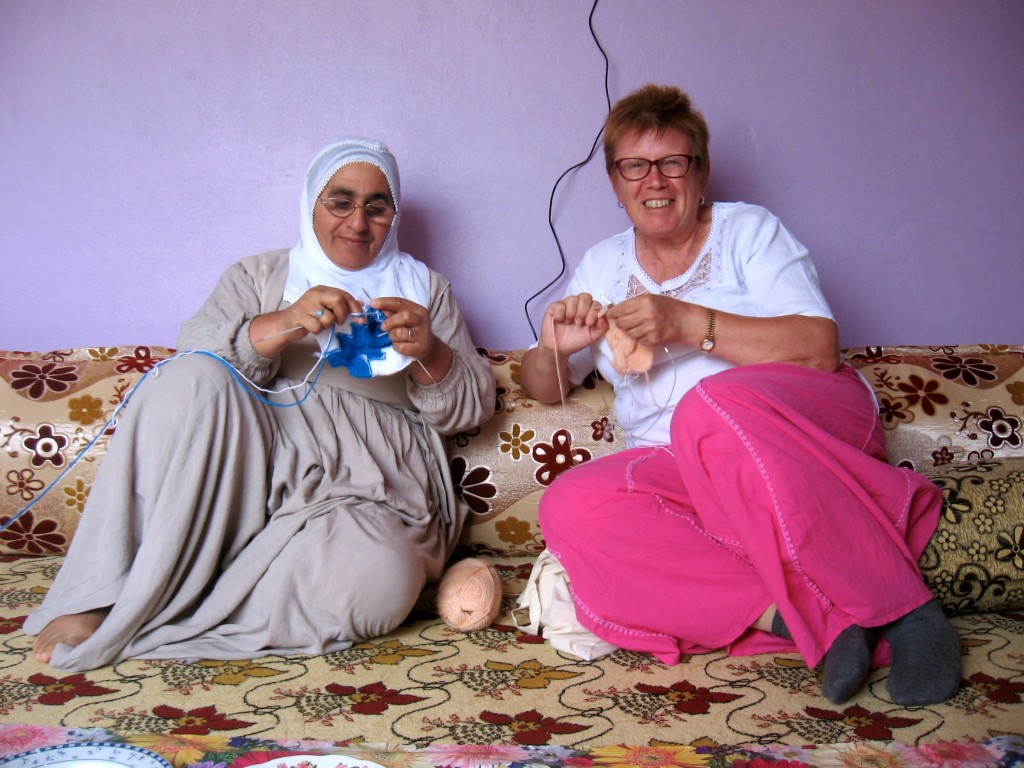
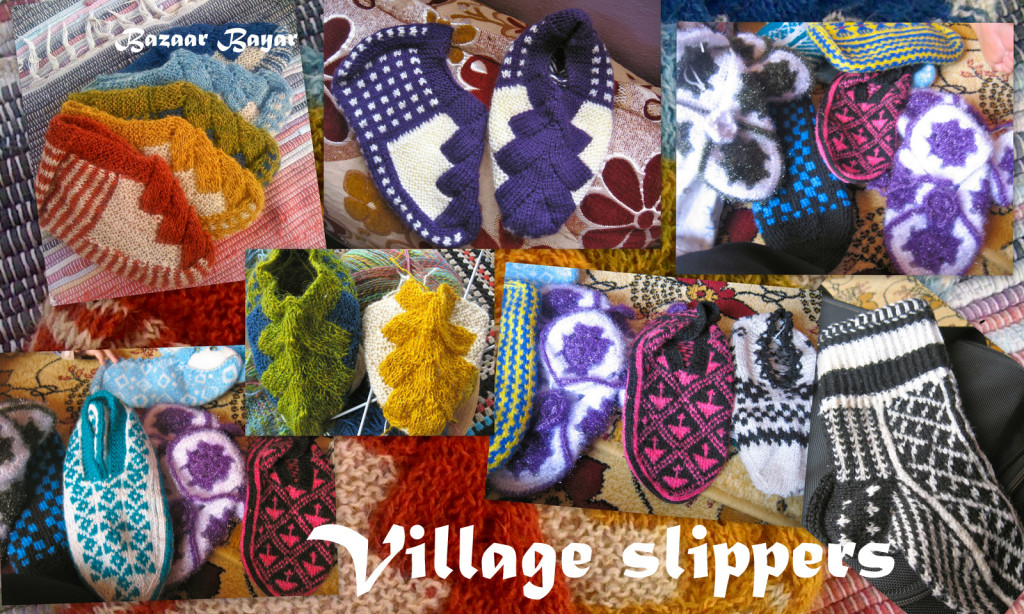
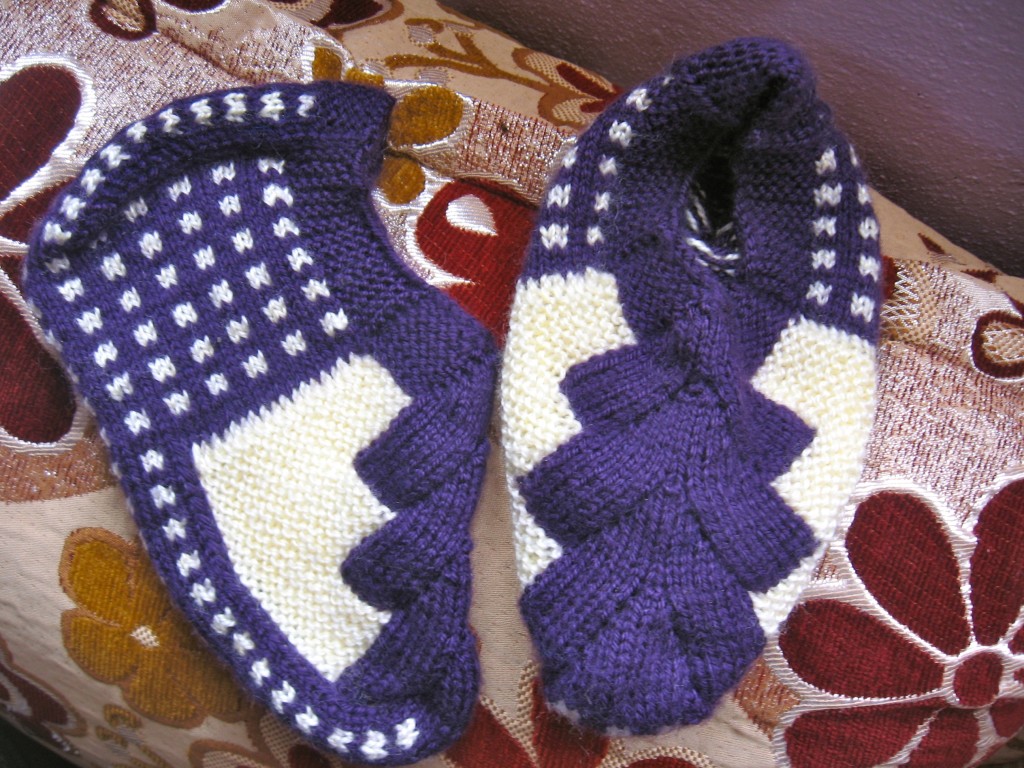
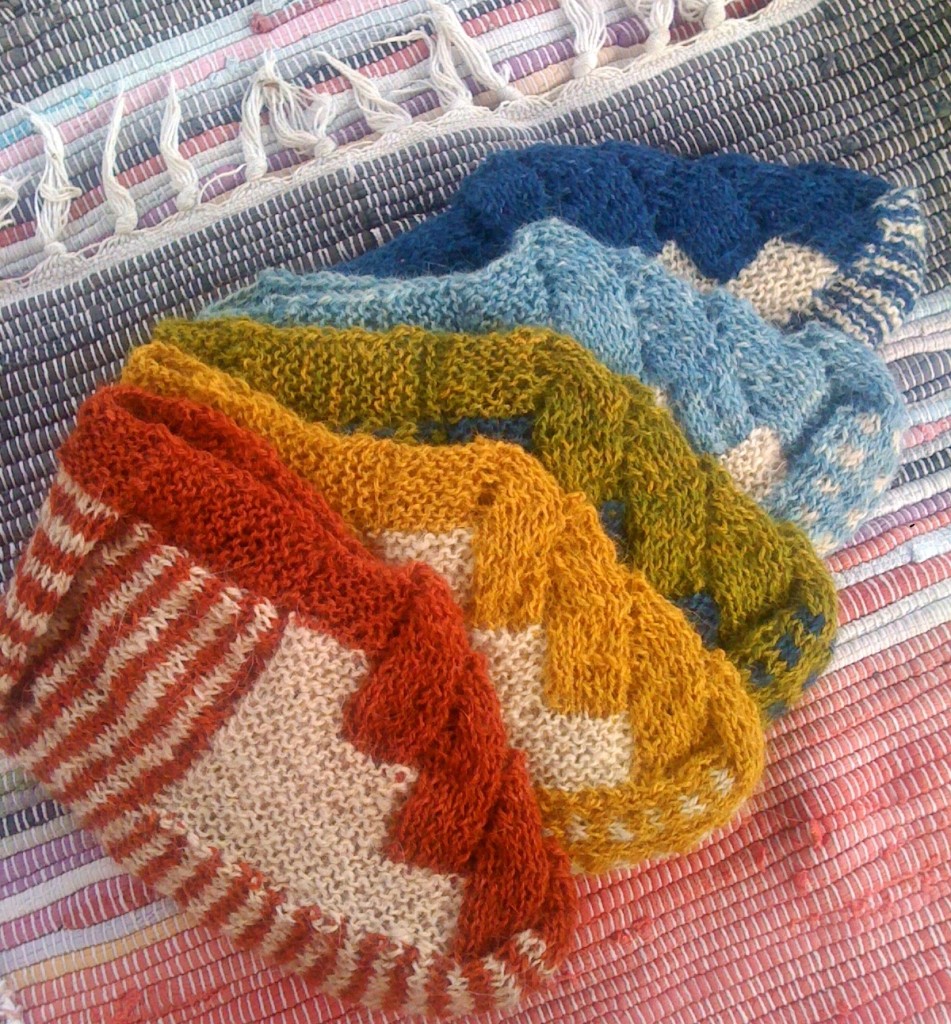
This was an adventure for you, the tour guide, and your tourists. How wonderful to have a chance to meet with locals who are generous enough to open their home and lives to you all. The bonus, of course, was the fellowship enjoyed by knitters who were kin and those who were not. Catherine, you should be proud of your Turkish family.
I am! Very true the best part about knitting is sharing and learning from each other. Thanks for your comments.